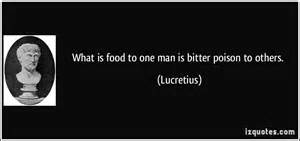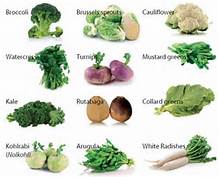
- posted: May 26, 2017
HOW TO INDIVIDUALIZE YOUR DIET
by Dr. Jon Repole, D.C., N.C., H.H.P., C.P.T., C.F.M.P.
So many diets, so many different choices!
I have discussed in a previous blog (SEE HERE) the general tenets of a life-long dietary regimen that can be applied in a universal manner – namely to eat foods in accordance with nature’s inherent wisdom. When one eats WITH rather than AGAINST (such as factory farmed meats, processed foods, GMO-laden foods, etc.) the bounty nature provides, one will find him or herself gravitating towards a diet based primarily around whole plant-based foods including: organic sun-ripened fruits, vegetables, grains, beans, nuts, seeds, and fungus (mushrooms). In doing so, Mother Gaia rewards us and packs her foods with increasing nutrient density – high levels of vitamins, antioxidants, phytonutrients, and minerals.
wisdom. When one eats WITH rather than AGAINST (such as factory farmed meats, processed foods, GMO-laden foods, etc.) the bounty nature provides, one will find him or herself gravitating towards a diet based primarily around whole plant-based foods including: organic sun-ripened fruits, vegetables, grains, beans, nuts, seeds, and fungus (mushrooms). In doing so, Mother Gaia rewards us and packs her foods with increasing nutrient density – high levels of vitamins, antioxidants, phytonutrients, and minerals.
In addition, these foods are also the lowest on the food chain (trophic level) of life – which simply means that they have the least amount of toxic exposure and bodily burden. In turn, we reap the benefits for protection from an entire host of degenerative diseases (heart disease, cancer, diabetes, and so on), increased longevity (quantity of life), and decreased aging (quality of life). It is truly a win-win – for our body, for our environment, and, of course, for all sentient creatures we share planet Earth with.
In this article, I want to discuss diet individualization. For within the universal tenets of diet, there are nuances, changes, additions, and subtractions that can prove to be advantageous and helpful for  certain individuals. This is particularly true for those persons suffering with conditions such as: fatigue, sugar-related problems, hyper-sensitivities, GI-related disorders, addictions, and so on. It is even more important, however, for those individuals who feel that he/she is doing the right thing but not “getting” the magic from the diet they are currently consuming.
certain individuals. This is particularly true for those persons suffering with conditions such as: fatigue, sugar-related problems, hyper-sensitivities, GI-related disorders, addictions, and so on. It is even more important, however, for those individuals who feel that he/she is doing the right thing but not “getting” the magic from the diet they are currently consuming.
One note to be reminded of before we move forward in this discussion is that these ideas/recommendations should be considered only AFTER (not BEFORE) you have tried switching to a whole foods plant-based diet. In other words, it doesn’t offer much help (or make much sense) if you haven’t preliminary tried to experiment or see “how you feel” after eliminating factory farmed meats, dairy, processed foods, meat analogs (such as soy hot dogs, soy hamburgers) and so on. The fundamentals always come first!
In this article, we will cover the following topics:
- Psychological awareness
- Sugar types
- Fast and slow oxidizers
- Fast and slow detoxers
- GI-related issues
- Food sensitivities, allergies and intolerances
- Genetics: MTHFR and ApoE
- Sympathetic and Parasympathetic
- Ayurveda wisdom
PSYCHOLOGICAL AWARENESS – WHAT’S EATING YOU?
I always like to begin with the basic concept of awareness. For starters, if you find that you have a poor relationship to food – it is never really about what you are eating but rather what it is that’s  eating you. Thus, you may want to look inward and introspect in an effort to see if the decisions you are making around food may be, in fact, masking deficiencies in one or more of our universal human needs such as: safety, security, love, significance, purpose, contribution, self-esteem, self-actualization, growth, and so on.
eating you. Thus, you may want to look inward and introspect in an effort to see if the decisions you are making around food may be, in fact, masking deficiencies in one or more of our universal human needs such as: safety, security, love, significance, purpose, contribution, self-esteem, self-actualization, growth, and so on.
As you continue to look inward, you may want to ask yourself the following question:
Are you eating the “wrong” foods due to shadow elements in your psyche?
For example, are you eating to…
- Kill pain?
- Numb stressors in your life?
- Escape from fears, or anxieties?
- Avoid confronting something in your life?
- Inflict punishment and self-sacrifice upon yourself?
- Numb the unhappiness you feel in your life?
TWO TYPE OF EATERS
In general there are two “types” of eaters – conscious and unconscious. Read below to see if you resonate with any of the descriptions.
The unconscious eaters fall into a varied spectrum including:
- Emotional eater: Eating to kill pain, numb stressors, etc. (as discussed above)
- Refuse not eater: It is here where the simple presence of food triggers you to robotically eat as if you have no control. Thus, these individuals never refuse what is given to them regardless of their hunger status.
- Waste not eater: The person who eats everything without “thinking.” They love free food, buffets, etc. They are influences by the dollar value of food.
- Chaotic eater: One who finds themselves bingeing? Eats on the go. Overscheduled.
- Distracted eater: Eating without mindfulness (i.e. while watching T.V.)
The conscious eaters can also fall into a varied spectrum including:
- The professional dieter: The person who jumps from one diet to another.
- Orthorexia: A term applied to a pathological (causing them stress, worry, and ill health) obsession with eating healthy.
- The true conscious eater: One who is aware of their food choices and continues to try and make healthy and sustainable choices for themselves and the world around them. They have a healthy “obsession” with eating healthy.
- The mindful eater: The person who takes time to smell and taste their food. They mindfully prepare their food and have gratitude for the bounty they are about to eat. They eat slow and chew their food.
- Intuitive eater: Eats in harmony with the natural flow or habits of nature. For example, they may find themselves eating more raw fruits and vegetables during the summer and warming foods during the winter.
SUGAR TYPES
Sugar-related concerns are perhaps one of the most potent problems influencing our dietary choices. This can include everything from simple sugar cravings, candida (yeast overgrowth), hormonal fluctuations, to more serious concerns such as metabolic syndrome and diabetes. I have already written about this topic, so will not repeat myself here – please click here to dive deeper into this very important topic.
SLOW AND FAST OXIDIZER
When you eat food, it goes through a process of digestion and then ultimately becomes distributed to our cells as fuel to be burned for energy. If things go right, the hormone insulin carries the broken down carbohydrates (sugar molecules) and presents them to the cell where they are carried to the cell’s factory warehouse – the mitochondria – to be processed for ATP (the energy language of our body). Some persons, can burn their food like a newspaper and some can burn their food like a log.
Newspaper Burner (Fast Oxidizer)
These individuals burn their food quickly and need to eat more frequent in order to avoid the “hangry” problem – becoming both hungry and irritated as a consequence of blood sugar lulls.  These individuals tend to need more “protein” and “fats” in their diet in an effort to help stabilize any blood sugar fluctuations. This can also be the individual that says that they have tried eating or making a switch to a whole food plant-based diet and report that they still feel fatigued or are simply “just not feeling right.” (Note: This is to be distinguished from the person who switches from a meat-centered diet to a plant-based diet and is simply going through a psychological rather physiologically need for more “protein” and is erroneously just not consuming enough calories. This can also be the person going through a cultural crisis of sorts).
These individuals tend to need more “protein” and “fats” in their diet in an effort to help stabilize any blood sugar fluctuations. This can also be the individual that says that they have tried eating or making a switch to a whole food plant-based diet and report that they still feel fatigued or are simply “just not feeling right.” (Note: This is to be distinguished from the person who switches from a meat-centered diet to a plant-based diet and is simply going through a psychological rather physiologically need for more “protein” and is erroneously just not consuming enough calories. This can also be the person going through a cultural crisis of sorts).
Log Burner (Slow Oxidizer)
These individuals burn their food slow and can oftentimes find themselves forgetting to eat for  “relatively” long periods throughout the day (from a relative perspective when compared to their "newspaper burner counterparts"). These individuals usually do very well with a high carbohydrate-type diet based around fresh fruits, veggies, smoothies, juices, etc.
“relatively” long periods throughout the day (from a relative perspective when compared to their "newspaper burner counterparts"). These individuals usually do very well with a high carbohydrate-type diet based around fresh fruits, veggies, smoothies, juices, etc.
OK, time to take the QUIZ to find out your “type”
Fast Oxidizer
- Can’t go long periods without eating?
- Do you need to snack often to feel okay?
- Does eating before bed help you sleep through the night?
- Does eating fatty foods like seeds, avocados and nut butters make you feel more energized or sustained?
- Are you energized after eating a high-protein, high fat meal such as one that is high in meat, chicken, seeds, nuts, tofu, and beans?
- Blood work shows objective findings: increased glucose, insulin resistance, pre-diabetes, and diabetes
- Do you eat food, and get energized?
Slow Oxidizer
- Do you have a minimal appetite for lunch?
- Do you have a minimal appetite for dinner?
- Does a high carbohydrate diet consisting of fruits, vegetables, smoothies, juices, etc. make you feel better?
- Does eating before bedtime worsen your sleep?
- Can go longer periods without eating?
- Eat food, feel satiated? Satisfied?
There are, of course, more in depth analysis that can be performed including more advanced diagnostics (blood and saliva) and detailed questionnaires. But for now, if you resonate with one of the “types”, here are some easy to implement suggestions.
- Quantity of meals: Try exploring with the amount of food you are eating at each meal.
 Are you overeating? Undereating?
Are you overeating? Undereating? - Quality of meals: Make sure you are eating whole plant-based foods (remember the fundamentals!)
- Timing of meals: Try exploring with the timing of your meals. For example, you may consider switching the largest meal of your day to lunch, not eating right before bed, snacking or grazing throughout the day (this last recommendation is of particular importance for fast oxidizers).
- Specifically for fast oxidizers:
- Consider choosing more low-glycemic foods to help with stabilizing sugar levels. For example, this could mean a decreased reliance on high sugar tropical fruits (pineapple, bananas, etc.) and an increased reliance on low sugar berries (blueberries, strawberries, etc.).
- Possible need for additional protein (20-50 grams). As a type of “diagnostic test”, try the following for a week to see how you feel (Note: Do not try this with animal protein!):
- Add 2-4 heaping tablespoons of hemp seeds (spread throughout the day) to your meals
- An extra serving or two of beans
- Tempeh, nuts, seeds and/or nut butters in between meals.
- Possible use (during the trial period) of a non-allergenic, organic, plant-based protein powders in your smoothies.
SLOW AND FAST DETOXERS
When we eat, breath, absorb (through our skin) or drink toxins our body’s detoxification pathways kick in and attempt to take the toxic substance and convert it into an inactive form that can be expelled outside the body – through our urine, sweat, or feces. A lot of this “work” is done in the liver through certain pathways oftentimes referred to as Phase 1 and Phase 2 detoxification.
Consider the following questions?
- Do you have multiple food sensitivities?
- Do you suffer with environmental sensitivities?
- Do you have problems with handling fats?
- Do you have chronic sinus-related issues?
- Do you have any of the following objective findings: increased liver enzymes, fatty liver, elevated CRP, etc.?
- Do you drink coffee in the afternoon and find it difficult to fall asleep?
- Do you get “tipsy” off a glass of alcohol?
- Do you drink coffee in the late evening hours and still find it easy to fall asleep?
- Do you suffer with adverse reactions to medications and supplements?
We are going to use the generic names of fast and slow detoxer to help distinguish between those individuals that process “toxins” rapidly through the liver (fast detoxer) and those individuals that process “toxins” slowly through the liver (slow detoxer). You can think of the liver as a “bucket.” Some people are born with rather large buckets (fast detoxer) and, thus, can eliminate toxins efficiently without overflow. Others, however, are born with small buckets (slow detoxers) and, thus, have a hard time keeping up with the toxic burden - oftentimes spilling their toxin burden directly into the bloodstream (rather than the urine and feces) causing a host off signs and symptoms.
Consider a few of the above questions once again with the concept of slow and fast detoxer as the known causative agent?
- Do you suffer with environmental sensitivities? (This is the classic slow detoxer – unable to keep up with toxic everyday burden from the environment such as perfumes, off-gassing from carpets, etc.)
- Do you drink coffee in the afternoon and find it difficult to fall asleep? (This person has a hard time clearing caffeine quickly from the body and, therefore, it lingers, accumulates, and stays in their system for a longer time – the slow detoxer.)
- Do you drink coffee in the late evening hours and still find it easy to fall asleep? (This individual clears caffeine out of the body quickly – the fast detoxer.)
- Do you suffer with adverse reactions to medications and supplements? (Inability to clear or breakdown toxic residues from medications and supplements – the slow detoxer. Or on the opposite side, it is possible that the person may be a fast detoxer and breaking down supplements and prescriptions too quickly increasing their potency in the blood stream.
What can be done to help support our detox pathways?
- Supplements to support Phase 1 detoxification pathways include: B-vitamins,
 glutathione, antioxidants, milk thistle, carotenoids, vitamin E, and vitamin C – to name a few
glutathione, antioxidants, milk thistle, carotenoids, vitamin E, and vitamin C – to name a few - Supplements to support Phase 2 detoxification pathways include: amino acids (glutamine, glycine, taurine, cysteine), sulphur-containing phytochemicals (found in garlic and cruciferous vegetables
- Eating an abundance of cruciferous vegetables, garlic, and rich sources of plant-based proteins such as beans, nuts, and seeds.
- Considering a detox program with a combination of fresh juices, fruits, vegetables, and/or smoothies.
GI-RELATED ISSUES
GI-related disorders, unfortunately, have now become commonplace. This is a direct result of food manufacturer’s assault upon our precious food systems and the drive of consumers for faster,  cheaper and more convenient food products. Conditions include: IBS, constipation, loose stools, Colitis, Chrohn’s, food sensitivities, leaky gut (intestinal permeability), ulcers, acid reflux, dysbiosis (overgrowth of bacteria, yeast, etc.), SIBO (small intestinal bacterial overgrowth), etc.
cheaper and more convenient food products. Conditions include: IBS, constipation, loose stools, Colitis, Chrohn’s, food sensitivities, leaky gut (intestinal permeability), ulcers, acid reflux, dysbiosis (overgrowth of bacteria, yeast, etc.), SIBO (small intestinal bacterial overgrowth), etc.
Even though these are “gut-related” signs and symptoms and diagnoses – they have far-reaching effects throughout the entire body. Without a properly functioning GI system – the entire body will suffer. Why? Quite literally everything in the human body (from growth of tissues, to energy, neurotransmitter production, hormonal health, etc.) has a reliance on the elemental sequence of digestion, absorption and assimilation of nutrients. Furthermore, research has shed light onto the true functionality of the amazing GI-system – which goes above and beyond its previously held notion of being a conduit or tube for the simple breakdown of nutrients. For example, it is now an accepted fact that our second brain (the enteric nervous system) and 70% of our body’s immune system is housed in this amazing and complex area of the body!
Although, this article is unable to tackle all the above related concerns. We can, however, come up with some universal gut-related ideas that you can try and/or experiment with.
Considerations
- Pay attention (not dogmatically) and experiment with food combining principles. Here are a few of the most important ideas to start with:
- Don’t overdrink with meals as to prevent “dilution of digestive enzymes.”
- Try eating fruit by itself and waiting ½ hour or so before eating anything else. Don’t eat fruit after meals – especially after protein rich foods.
- Eat veggies with grains OR veggies with beans but not all three together.
- Go gluten and dairy free.
- Remember the quantity (don’t overeat) and quality (whole plant-based meals) of the foods you consume.
- Try pre-digested or food processing – this is referring to the processing of foods that either aids or mimics what your GI system would be performing (in the stomach or small intestines) BEFORE you actually consumed it. This can include simple well know processing techniques such as the use of a blender (smoothies), making soups, soaking nuts/seeds (to remove “enzyme inhibitors”), purees, massaging your vegetables (to help with decreasing roughage volume), use of apple cider vinegar (to help with acid breakdown prior to stomach contact), etc.
- Avoid all vegetables that are causing adverse food or GI-related reactions. Thus, you may want to rely on cooked (rather than raw) in the initial stages until healing has occurred.
- Use of healing vegetable broths.
- Juicing – stick with green juices and use minimal ingredients (treat it like “fruit” in the food combining section above)
- Use of cultured veggies or other fermented products.
- Mono-dieting: This is the idea of using a small number of ingredients in your recipe. For example, instead of a smoothie with fruits, vegetables, hemp seeds, omega-3 oils, almond milk, etc. – you may want to try a more easy to stomach recipes such as one with water, a banana and one other fruit as your initial smoothie.
- Problems with beans? Nuts? Seeds? Try eating them in puree forms such as nut pates, hummus varieties, butters, etc.
FOOD ALERGIES, SENSITIVITIES, AND INTOLERANCES
This is a very large topic so I will only attempt to touch on some key points. In brief, food allergies and food sensitivities are immune-related responses whereby the former is an immediate response causing “allergic” symptoms such as visible hives or anaphylaxis and the latter correlated with less obvious delayed symptoms such as fatigue, headaches, depression, gut dysfunctions, autoimmunity, and much more. Food intolerances, on the other hand, are non-immune mediated and are due to deficiencies in certain key enzymes that are required to digest certain foods. For example, lactose intolerance is the inability to digest the milk sugar, lactose, in milk due to a deficiency in the enzyme lactase.
A word of caution! Although food sensitivities are an important part of any functional and holistic approach to health and disease management, it is important to walk through logical steps before jumping to conclusions. I offer the following as a guide (not to be taken dogmatically – as there are always exceptions).
- If you are dealing with multiple food sensitivities is best to think in terms of systemic-related food issues rather than an idea that you have been given a bad deck of the “food allergy cards.” For example, if someone undergoes testing and finds that he or she has 20 or so food “sensitivities” – it is much more logical to think in terms of global GI-related issues rather than 20 specific food challenges. For example, testing or treating for intestinal permeability (“leaky gut”) or immune-related problems would be the first area to target or explore.
- Start with taking out the most common sensitivities. In my clinical experience, the following list of foods would be the best place to start as they pose the greatest “food sensitivity”-related health challenges. The foods are: dairy, gluten, all processed foods, and animal products.
- Consider the use of digestive enzymes and probiotics.
- Consider experimenting with other food categories that have known deleterious effects (in some NOT ALL individuals) including: FODMAPS, nightshade veggies, and histamine-related foods – to name a few.
Click HERE to learn about “leaky gut”
GENETICS
We are no longer mere victims of our inheritance! Through the newly emerging field of epigenetics, we now know what rules of reasonableness and commonsense have been telling  us all along. How our genes are bathed (the environment) dictates gene expression or suppression. In other words, our diet, lifestyle, decisions, etc. play a crucial role as to what chapters of our book of life (DNA) are read, skipped over, torn out, and so on.
us all along. How our genes are bathed (the environment) dictates gene expression or suppression. In other words, our diet, lifestyle, decisions, etc. play a crucial role as to what chapters of our book of life (DNA) are read, skipped over, torn out, and so on.
The field of genetics is ever-growing and will continue to do so month to month and year to year. In this brief section, I wanted to highlight just two genes that, I believe, are noteworthy simply because the information they provide can be useful in dietary individualization.
The first gene is called MTHFR and I have dedicated an entire blog post to this topic – click HERE for more information.
The second gene is called ApoE. It explains the diversity and mixed results, for example, of such things as alcohol consumption, fat utilization, cholesterol control, Alzheimer risk, and type of exercise on our overall health. For example, it is well documented that certain individuals have what can be thought of as a cardio-protective effect in regards to alcohol consumption while others have a deleterious effect. This gene tells you which category you fit in.
The ApoE gene also gives insights (in much the same analogy as alcohol) on to the damaging effects of animal products on your overall health. This gene will tell you exactly which individuals are at the highest of risk.
SYMPATHETIC VS. PARASYMPATHETIC STATES
The nervous system can be thought of as having two major components – the fight or flight reactionary system (sympathetic) and the rest and digest (parasympathetic). It is analogous to  our car whereby the breaks are the parasympathetic and the gas pedal our sympathetic. When we want to get up and move – we push on the gas pedal – thereby diverting energies (blood supply) to our extremities (to “fight or flight”) and away from our core (including our digestive system). Conversely, when we sit down to eat – we press on the breaks – thereby initiating energies (blood supply) away from the extremities and toward the core – thereby calling upon production of digestive enzymes in preparation for digestion, absorption, and assimilation.
our car whereby the breaks are the parasympathetic and the gas pedal our sympathetic. When we want to get up and move – we push on the gas pedal – thereby diverting energies (blood supply) to our extremities (to “fight or flight”) and away from our core (including our digestive system). Conversely, when we sit down to eat – we press on the breaks – thereby initiating energies (blood supply) away from the extremities and toward the core – thereby calling upon production of digestive enzymes in preparation for digestion, absorption, and assimilation.
Imagine, however, eating in a state of sympathetic dominance – while anxious, while driving in the car on the way to work, while walking, etc. The result will be poor and depleted digestive enzyme production.
Now imagine, “grounding yourself” by concentrating on the recommendations below. The result – maximizing your digestive capabilities.
- Stay in the moment and eliminate distractions like T.V., etc.
- Look at the food: shape, color, texture, etc.
- Smell your food as some do, for example, before drinking a glass of wine.
- Taste and savor the food.
- Chew your food slowly.
- Prepare your food with love and appreciation.
- Give thanks and gratitude.
AYURVEDA
I will have to devote an entire blog post to the ancient wisdom of Ayurveda as it would be impossible to explain all the details and nuances of what is thought to be the oldest healing science known to man and womankind.
Ayurveda can be translated at the science of life. Its goal is to live a virtuous life in accordance with  the natural rhythms of nature. Ancient Vedic texts tell us that the Rishis, or Holy Ones of India, acquired the knowledge of Ayurveda through meditation and the keen observation of nature. For generations the knowledge that the Rishis attained was passed along through an oral tradition.
the natural rhythms of nature. Ancient Vedic texts tell us that the Rishis, or Holy Ones of India, acquired the knowledge of Ayurveda through meditation and the keen observation of nature. For generations the knowledge that the Rishis attained was passed along through an oral tradition.
Ayurveda is a mythology (which when defined appropriately – is a metaphor or a type of metaphysical realization that cannot be explained in words. It attempts to explain or point to higher truths). The Rishis believed that the human body and the universe were composed of prana (the primal energy or the vital life force) which manifests in the form of 5 gross natural elements: earth, water, fire, air and ether. Any imbalance of these elements found within our bodies would be experienced as “dis”ease. From a more practical understanding, these are the elements that make up of the "Great Chain of Being" that nearly all cultures discuss but, however, use different names such as gross (physical, tangible – such as earth, water, and fire), subtle (energy, non-physical components – such as air) and causal (properties that transcend the gross and subtle, our spiritual components – or ether).
Furthermore, it is believed that when these archetypal forms collaborate or come together, they produce individual constitutions or “energetic blueprints” which govern all biological, psychological, and physiopathological functions of the body, mind, and spirit. These are referred to as doshas. Included below are each of their season/time correlates, association to regions of body and functions, particular body type, characteristics, positive/negative personality traits, and physical manifestations.
Vata (combination of AIR and ETHER): The Archetypal “gypsy.” Winter, 2-6 a.m. and p.m., (Small and Large Intestines, kinetic energy, catabolic), slight build with small bones and thin frame, movement, dry, imaginative, enthusiasm, freedom, adaptability, unpredictability, energy and mood fluctuations, difficulty establishing routines, anxious, nervous, decreased metabolism, gas and constipation, nerve/muscle tension, adrenal and circulatory issues. Easiest to move out of balance.
Pitta (combination of WATER and FIRE): The Archetypal “overachiever, type A, extrovert.” Summer, 10-2 a.m. and p.m., (Spleen, Liver, Stomach, 1st part of small intestines, pancreas, gall bladder, enzymes), medium build with good musculature, heat, metabolism, entrepreneurial spirit, likes to experience intensity, confidence, decisiveness, concentration, angry/aggressive, active mind, impatience, acid/bile-related problems, loose stools, infections, inflammatory issues and heart disease.
Kapha (combination of WATER and EARTH): The Archetypal “solid as a rock.” Spring, 6-10 a.m. and p.m., (Bronchi, Sinus, Nostrils, Throat, nutrients, potential energy, anabolic), short or medium height, strong, tend to hold/gain weight easily, structured, centered, grounded, patience, stability, calm, attachment to routine, desire to sleep, accumulation of fluid, fats, and toxins (congestion, mucus), cold, thyroid and blood sugar issues. Hardest to move out of balance.
Before we talk about a rather simplistic treatment approach (from a Ayurveda perspective) we need to understand the following:
- The law of similarities and opposites:
- Like increase like
- For example, if a pitta dominant individual finds themselves eating hot and spicy foods on a hot summer day while in a heated conversation. The “like-ness” of all these “fire attributes” could manifest as – anxiety, heartburn and inflammation.
- Opposites “decrease each other”
- If the same person above came to our office we would, in fact, consider the “opposites” for treatment in an effort to bring them back into balance.
- Like increase like
General treatment recommendations:
Kapha (remember structure, water, and spring)
In general eat foods that are light, dry and warm. Low fat foods. Low glycemic foods. All beans except for soy. Non-stored grains (millet, buckwheat, amaranth, quinoa). Leafy greens, berries, and sprouts. Avoidance of excess water.
Other: novelty (biggest issue is complacency), dry and warm climate, daily exercise – especially aerobic, etc.
Pitta (think metabolism, summer)
In general eat foods that are cooling, liquid-based, low protein (however, increase amounts of plant-based protein foods such as hemp, chia, and beans may be necessary to keep in balance), raw, sweet fruits, and foods with a high water content. Avoid salty, sour, hot or spicy foods. Avoid stimulants (i.e. caffeine).
Other: balance, rest, time in nature, exercises that are cooling or calming (i.e. swimming), emotional intelligence
Vata (think movement, winter, and unpredictability)
In general, foods should be warm, heavy, fat, oily, and hydrating. Decrease beans (unless you find ways to integrate that does not produce adverse GI effects). Sweet fruits. Spices for digestion such as ginger. Root veggies. Increase hydration of foods such as soaking nuts and seeds, and avoid dried fruits. Reliance on more cooked foods especially veggies. Eat regularly to maintain routine. Possible increase in plant-based proteins if in “adrenal fatigue” and blood sugar issues present (in this respect it would be similar to Kapha but maintenance of blood sugar for different reasons).
Other: creation of routine, live in warm and tranquil environment, pay attention to the rhythms of nature (sun and moon), and perform light exercise that provides balance and predictability (i.e. Tai Chi)
Locations
Jacksonville Location
9957 Moorings Drive, Suite 403
Jacksonville, FL 32257, US
HOURS OF OPERATION
9:00 am - 6:00 pm
9:00 am - 6:00 pm
9:00 am - 6:00 pm
9:00 am - 6:00 pm
9:00 am - 6:00 pm
Closed
Closed

